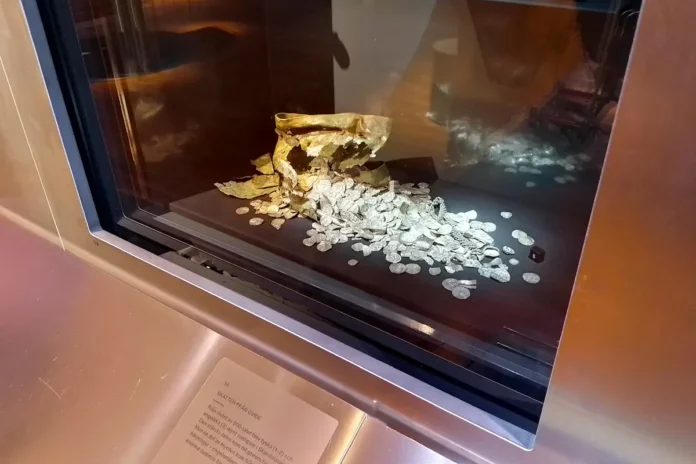Step into the Ekonomiska Museet—Kungliga Myntkabinettet, also known as the Royal Coin Cabinet. Located in the heart of Stockholm, this museum shares its premises with the Historical Museum. Explore fascinating collections that focus on the history of economics, numismatics (the study of coins and currency), and the development of finance and money.
Coins, banknotes, medals, and other artifacts that highlight the rich history of money and its social effects are among the many items on display in the exhibits. Learn about the evolution of financial practices, monetary systems, and economic developments from antiquity to the present.
A journey through the Royal Coin Cabinet’s history
The royal Swedish coin collections from the 16th century are where the Royal Coin Cabinet got its start. Johan III’s chancellor, Rasmus Ludvigsson, started collecting older Swedish coins in 1572. Sweden’s continuous battle with Denmark over the use of three crowns in the national coat of arms included this attempt.
In 1630, the collection received older coins from King Gustav II Adolf. The Swedes won a lot of medals and coins during the Thirty Years’ War, and these eventually made their way into the royal collection. In 1727, the Antiquities Archive merged this collection with others it had obtained over time. These extra items were obtained through additional purchases and the redemption of archaeological finds.
The coins have moved around a bit over the years
Soon after, they gave the collection the name Royal Coin Cabinet and entrusted the National Antiquarian with its care. By acquiring private collections during the 18th century, the Coin Cabinet’s holdings grew considerably.
- In 1769, the collections were moved to the newly built Stockholm Palace.
- In 1786, the Royal Academy of Letters, History, and Antiquities (Vitterhetsakademien) established itself and took over the management of the collection. During the years 1793–1816, the collections were under the Royal Museum. In connection with this, the Royal Coin Cabinet introduced the title Garde des médailles (French for “medal keeper”) for the person responsible.
- From 1816, the cabinet was again directly under the Royal Academy of Letters, History, and Antiquities, according to the decision of May 8, 1816, and remained there until 1975. The title Garde des médailles accompanied the National Antiquarian in his role at the Coin Cabinet until the 20th century.
- From 1844 to 1845, the Royal Coin Cabinet relocated from the Royal Palace to the Ridderstolpe House at Skeppsbron. They also inaugurated an exhibition that was open to the public.
- In 1975, the Royal Coin Cabinet became a museum with its own director. It was placed under the authority of the National Heritage Board and the National Historical Museums.
This change meant that it was no longer under the Royal Academy of Letters, History, and Antiquities. The cabinet was turned into a museum in 1998 and came under the National Historical Museums’ jurisdiction.
Other attractions near the Royal Coin Cabinet
- The Royal Coin Cabinet and the Historical Museum (Historiska Museet) are housed on the same property and feature extensive exhibitions on Sweden’s history from the Stone Age to modern times.
- The nearly complete 17th-century warship Vasa is on display at the Vasa Museum (Vasamuseet), a maritime museum. Situated just outside the city center on the island of Djurgården.
- Skansen: The world’s first open-air museum, showcasing Swedish life and culture throughout history. Situated on the island of Djurgården.
- Junibacken: A children’s museum dedicated to Swedish children’s literature, especially the works of Astrid Lindgren. Also situated on Djurgården.
These attractions provide a rich and diverse cultural experience for anyone visiting the area around the Royal Coin Cabinet.










